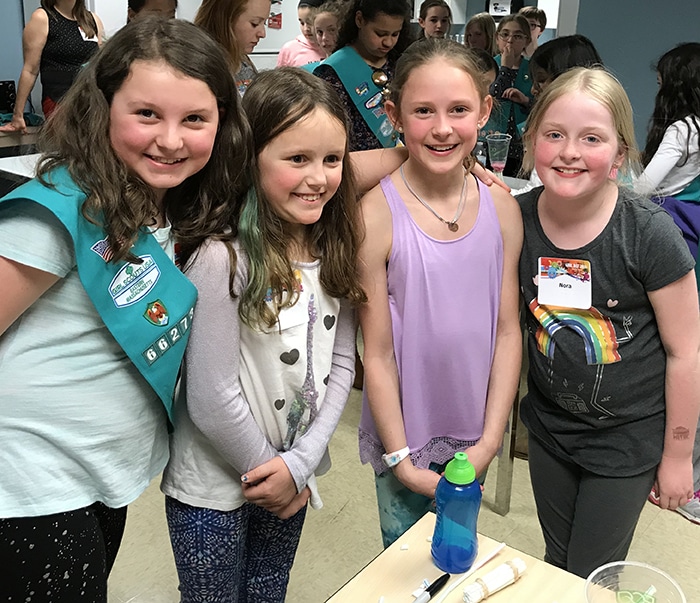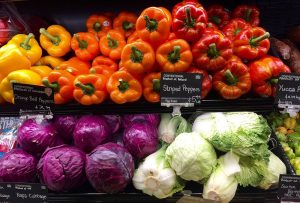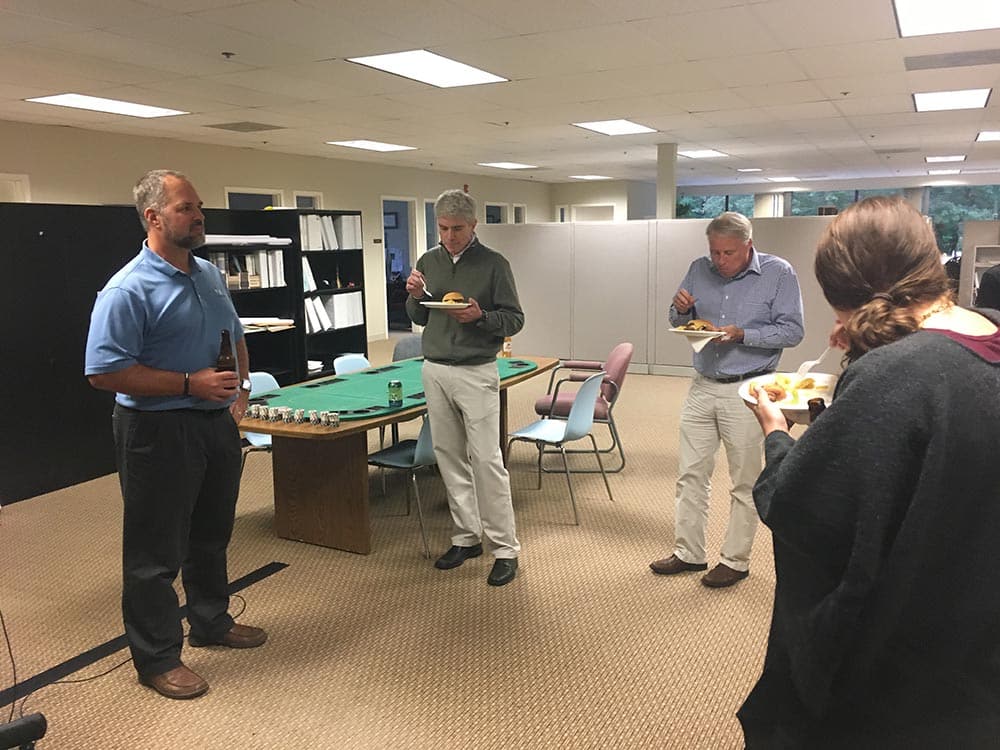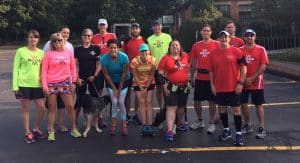Inspiring Young Women

On April 23, 2018, Tata & Howard hosted an Introduce a Girl to Engineering event. Thirty-four junior girl scouts (from grades 4-5) from five local troops attended our interactive and informative overview of environmental engineering.
Women engineers from the company were eager to welcome the scouts. They know from experience how important it is to inspire young girls and get them excited about a successful career in engineering. They also know the challenges women often face in the field of engineering long known to be male-dominated.
Slowly, however, this trend is beginning to change, as more young women are earning engineering degrees.
 Twenty-five years ago, when Tata & Howard was a newly established company, graduating classes from engineering schools may have been 1-2 percent women. As recently as 2016, about 20 percent of graduating engineers were female, and today, Tata & Howard stands out in the Water and Wastewater industry out as a 100% employee-owned company, led by two women co-president engineers, and 38 percent of its workforce being female engineers.
Twenty-five years ago, when Tata & Howard was a newly established company, graduating classes from engineering schools may have been 1-2 percent women. As recently as 2016, about 20 percent of graduating engineers were female, and today, Tata & Howard stands out in the Water and Wastewater industry out as a 100% employee-owned company, led by two women co-president engineers, and 38 percent of its workforce being female engineers.
These women engineers are the future role models and inspiration for young girls. On this night, they were excited to share their experiences with the girl scouts and tell them what it is like to be an environmental engineer in the water and wastewater industry.
Their excitement was unmistakable.
We presented a colorful slideshow illustrating how clean water is delivered to our homes—starting from groundwater or surface water sources and pumped through pipes to a water treatment facility. The water treatment process was shown with a simple water filtration demonstration, screening dirty water with both coarse rocks and a coffee filter. After going through a treatment process, it was explained that clean water is then stored in tanks and eventually ends up in the pipes that lead to our homes—and any place where we can turn on the tap and drink water.
The presentation was followed by questions, answers, and everyone’s favorite…pizza. The girls were then divided into seven teams and instructed to build a freestanding water tank using only a handful of ordinary items, such as a plastic cup (the tank), drinking straws, bubble gum, band aids, string, thumbtacks, string, paper clips, and toothpicks. The challenge lasted 30 minutes, after which, 8 ounces of water was poured into the water tank creations to test for structural integrity and left to stand for 30 seconds without spilling any liquid.
Girl Day Water Tank Instructions
Lots of excitement and fun ensued as the water towers wobbled, leaked and finally toppled into a watery mess! Not all the tanks collapsed however. A few withstood the water test challenge and a winning team emerged—the Llamacorns—who built a tower standing tall at 11 ¼”. The Greatest Kitty Cookie team came in a close second with a 9 ½” tall structure.
Before leaving for the evening, each scout was presented with a certificate and a merit badge. Many thanks to all the Tata & Howard women volunteers who helped make Introduce a Girl to Engineering a memorable and enjoyable event for these young girls.
And hopefully…the girls also left with a greater appreciation and enthusiasm about pursuing a career in engineering.
Team Results:
Double Bubble – 8 ¼” Collapsed
The River & the Sky – 16 ½” Collapsed
Beautifully Disgusting – 6 ½” Leaked
Llamacorns – 11 ¼” Winning team!
The Greatest Kitty Challenge – 9 ½” – Second Place
Royalty – 11 ½” Collapsed
Water Dogs – 4 ¾” Leaked













 Some of it can be recycled. Quite a bit ends up in the trash and landfills. And more than you can imagine ends up loose as plastic pollution, eventually making its way into our waterways. There are millions of tons of debris floating around in the water—and most of it is plastic. It is estimated that up to 80% of marine trash and plastic actually originates on land—either swept in from the coastline or carried to rivers from the streets during heavy rain via storm drains and sewer overflows.
Some of it can be recycled. Quite a bit ends up in the trash and landfills. And more than you can imagine ends up loose as plastic pollution, eventually making its way into our waterways. There are millions of tons of debris floating around in the water—and most of it is plastic. It is estimated that up to 80% of marine trash and plastic actually originates on land—either swept in from the coastline or carried to rivers from the streets during heavy rain via storm drains and sewer overflows. Drink from reusable containers and fill with tap water. Consider that close to 50 billion plastic bottles are tossed in the trash each year and only 23% are recycled!1 If that isn’t’ enough to convince you to stop buying ‘disposable’ water bottles, a recent study by
Drink from reusable containers and fill with tap water. Consider that close to 50 billion plastic bottles are tossed in the trash each year and only 23% are recycled!1 If that isn’t’ enough to convince you to stop buying ‘disposable’ water bottles, a recent study by 

 Not only healthier for you, cooking at home helps reduce the endless surplus of plastic packaging – take out containers, food wrappers, bottles, and eating utensils. Choose fresh fruits and veggies and bulk items with less packaging…and pack your leftovers or lunch in reusable containers and bags.
Not only healthier for you, cooking at home helps reduce the endless surplus of plastic packaging – take out containers, food wrappers, bottles, and eating utensils. Choose fresh fruits and veggies and bulk items with less packaging…and pack your leftovers or lunch in reusable containers and bags. MA (ACEC/MA) for the Long Pond Water Filtration Facility in Falmouth, MA. The award was presented at ACEC/MA ceremony and gala held on March 14, 2018 at the Royal Sonesta in Cambridge, Massachusetts.
MA (ACEC/MA) for the Long Pond Water Filtration Facility in Falmouth, MA. The award was presented at ACEC/MA ceremony and gala held on March 14, 2018 at the Royal Sonesta in Cambridge, Massachusetts. Engineering-News Record (ENR) New England announced in December 2017, their Regional Best Projects Winners. Methuen Construction, the contractor for the construction of this facility, was awarded two Best Projects awards: Water / Environment – Best Project and Excellence in Safety – Best Project (highest honors). Projects were evaluated on the ability of the project team to overcome challenges, contribution to the industry and community, safety and construction, and design quality.
Engineering-News Record (ENR) New England announced in December 2017, their Regional Best Projects Winners. Methuen Construction, the contractor for the construction of this facility, was awarded two Best Projects awards: Water / Environment – Best Project and Excellence in Safety – Best Project (highest honors). Projects were evaluated on the ability of the project team to overcome challenges, contribution to the industry and community, safety and construction, and design quality.





 MARLBOROUGH, MA, January 15, 2018 –
MARLBOROUGH, MA, January 15, 2018 –  While we have been celebrating all year, October 19, 2017 is the official day of our 25th anniversary! All offices enjoyed a catered luncheon, after which we heard a few words from Co-President Karen Gracey and Co-Founder & Senior Vice President Paul Howard. After their speeches, we all raised a champagne toast to our incredible success over the past 25 years, and for continued success over the next 25 years. All employee-owners were also gifted with Tata & Howard fleece jackets. The day was a great success, and everyone felt proud and humbled to be part of this momentous occasion.
While we have been celebrating all year, October 19, 2017 is the official day of our 25th anniversary! All offices enjoyed a catered luncheon, after which we heard a few words from Co-President Karen Gracey and Co-Founder & Senior Vice President Paul Howard. After their speeches, we all raised a champagne toast to our incredible success over the past 25 years, and for continued success over the next 25 years. All employee-owners were also gifted with Tata & Howard fleece jackets. The day was a great success, and everyone felt proud and humbled to be part of this momentous occasion.







 Just like African women and children who leave their homes each day to fetch unimproved water that is miles away, thousands of Navajo also make a daily journey in search of water. For the few fortunate who own cars, they may drive to find water, although the gas expense is almost unbearable for many. For those without vehicles, they must walk miles to find water, sometimes getting the water from livestock troughs that are rife with bacteria and contaminants, other times getting water from unregulated wells and stock ponds.
Just like African women and children who leave their homes each day to fetch unimproved water that is miles away, thousands of Navajo also make a daily journey in search of water. For the few fortunate who own cars, they may drive to find water, although the gas expense is almost unbearable for many. For those without vehicles, they must walk miles to find water, sometimes getting the water from livestock troughs that are rife with bacteria and contaminants, other times getting water from unregulated wells and stock ponds.